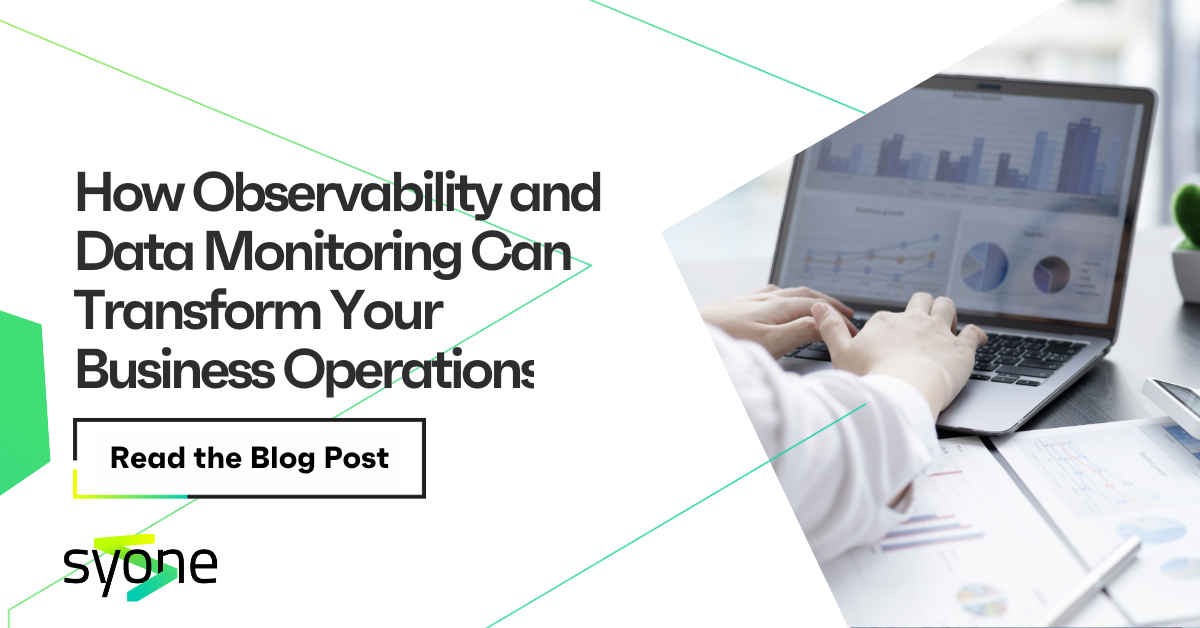Nowadays, organizations face a constant barrage of cyber threats. As businesses expand their online presence, the potential for attacks grows, making it increasingly challenging to detect and respond to security incidents promptly. Enter log monitoring – a crucial tool in the cybersecurity arsenal.
But what exactly is log monitoring, and why should your organization care?
Think of log monitoring as the sentinel of your digital fortress, constantly watching and analyzing data from various sources to spot potential threats and anomalies. By implementing robust log monitoring practices, you can:
- Catch security breaches early
- Stay compliant with industry regulations
- Safeguard your valuable digital assets
In this guide, we'll explore the ins and outs of log monitoring for security, diving into its components, best practices, and real-world applications across industries. Whether you're an IT pro or a business leader aiming to boost your organization's security, this guide will equip you with valuable insights to leverage log monitoring effectively in your cybersecurity strategy.
Understanding Log Monitoring for Security
What is Log Monitoring in Cybersecurity?
Log monitoring is like having a team of digital detectives constantly combing through your IT infrastructure's data trail. It involves collecting, analyzing, and interpreting log data generated by various components of your systems. In cybersecurity, this process focuses on identifying potential threats, unusual activities, or policy violations that could signal a breach or attempted attack.
This vigilant process typically keeps an eye on several types of logs:
- System Logs: Capturing operating system-level events and hardware changes
- Application Logs: Recording app-specific activities and user interactions
- Network Logs: Documenting traffic patterns and firewall activities
- Security Logs: Focusing on authentication attempts and access controls
Remember, log monitoring isn't a set-it-and-forget-it task. It requires ongoing attention and sophisticated tools to sift through vast amounts of data in real-time.
The Importance of Log Monitoring in Security
Log monitoring plays a vital role in cybersecurity for several reasons:
- Early Threat Detection and Quick Response: By continuously analyzing logs, you can spot potential security incidents as they unfold, allowing for swift action.
- Regulatory Compliance: Many industry regulations require organizations to maintain and review logs regularly.
- Forensic Analysis Support: If a security breach occurs, log data provides crucial forensic evidence, helping investigators piece together what happened.
- Proactive Security Enhancement: Regular log analysis helps identify security gaps and vulnerabilities, allowing you to strengthen your defenses before an attack occurs.
Key Components of Effective Log Monitoring
Log Collection and Centralization
The foundation of effective log monitoring is comprehensive log collection and centralization. This involves gathering logs from various sources across your infrastructure and bringing them together in one place for analysis.
Elastic, a powerful open-source search and analytics engine, offers robust capabilities for log collection and centralization, including:
- Real-time data collection from multiple sources
- Automatic discovery of network devices and systems
- Flexible data storage options
Centralizing logs offers several advantages:
- One-stop access to all log data, simplifying analysis and correlation
- Consistent timestamp and format standardization across different log sources
- Better ability to detect multi-stage attacks that span multiple systems
Log Analysis Techniques
Once you've gathered and centralized your logs, the next crucial step is analysis. Modern log analysis uses various techniques to uncover potential security threats:
- Pattern Recognition: Spotting known attack signatures or unusual behaviors in log data.
- Statistical Analysis: Establishing baselines of normal activity to detect deviations that may indicate threats.
- Machine Learning and AI: Advanced AI techniques can reveal complex patterns and predict potential threats, often catching subtle indicators that human analysts might miss.
- Correlation Analysis: Connecting seemingly unrelated events across different log sources to reveal sophisticated attacks.
Alerting and Incident Response Integration
Effective log monitoring isn't just about analysis; it's about taking timely action when threats are detected. This requires a robust alerting system integrated with incident response workflows.
Key considerations for alerting include:
- Setting up customizable triggers for specific events or thresholds
- Establishing escalation procedures for different alert severities
- Integrating alerts with incident response platforms for seamless handoff to security teams
SIEM (Security Information and Event Management) solutions can play a crucial role in automating alert generation and initial response actions, helping your organization react quickly to potential threats. While the Elastic stack is not a SIEM itself, it can be used to build one by integrating with other tools and systems to provide a comprehensive security monitoring solution.
Best Practices for Implementing Log Monitoring
To get the most out of log monitoring for security, follow these best practices:
- Set Clear Objectives: Define what you want to achieve with log monitoring, such as detecting specific types of security threats or meeting compliance requirements.
- Prioritize Critical Systems and Data: Focus your monitoring efforts on high-value assets and sensitive data repositories. Implement tiered monitoring based on asset importance.
- Standardize Log Formats: Normalize logs from different sources for consistent analysis. Implement timestamp synchronization across systems to ensure accurate event sequencing.
- Regularly Review and Update Monitoring Rules: Stay current with emerging threats and attack vectors. Periodically assess your monitoring effectiveness and fine-tune alerting thresholds to reduce false positives.
- Automate Where Possible: Use SIEM solutions for automated analysis and correlation. Implement AI and machine learning for advanced pattern recognition.
Overcoming Common Challenges in Log Monitoring
While log monitoring is crucial for security, it comes with its own set of challenges. Here's how to address some common issues:
- Dealing with High Data Volumes: Implement efficient log filtering and aggregation techniques. Cloud-based log management solutions can provide scalable storage and processing capabilities.
- Reducing False Positives: Fine-tune alerting rules based on context and implement machine learning for more accurate threat detection.
- Addressing Resource Constraints: Consider cloud-based log management solutions for scalability and cost-effectiveness.
- Ensuring Log Integrity: Implement secure logging practices to prevent tampering. Use cryptographic hashing for log verification and ensure robust access controls.
Cross-Industry Applications of Log Monitoring
Log monitoring plays a vital role across various industries, each with its unique security challenges and regulatory requirements.
Financial Services
In the financial sector, log monitoring helps:
- Detect fraudulent transactions by analyzing user authentication logs and transaction patterns
- Ensure compliance with regulations like SOX (Sarbanes-Oxley Act) and PCI DSS through comprehensive audit trails
Healthcare
In healthcare, log monitoring is crucial for:
- Protecting patient data and ensuring HIPAA compliance by monitoring access to electronic health records
- Detecting and preventing insider threats through analysis of user behavior analytics
E-commerce
For e-commerce businesses, log monitoring helps:
- Identify and mitigate DDoS attacks by monitoring network traffic logs
- Detect account takeover attempts through analysis of login patterns
Manufacturing
In the manufacturing sector, log monitoring assists in:
- Monitoring Industrial Control Systems (ICS) logs to detect potential cyberattacks on critical infrastructure
- Ensuring operational continuity by identifying and addressing system anomalies early
The Future of Log Monitoring in Cybersecurity
As cyber threats evolve, so must log monitoring techniques. Here are some emerging trends to watch:
- AI-powered log analysis will become more sophisticated, offering predictive threat detection capabilities
- Integration with threat intelligence platforms will provide real-time context to log data, enhancing threat detection accuracy
- Quantum computing may revolutionize log analysis capabilities, handling exponentially larger datasets and uncovering patterns that are currently undetectable
These advancements promise to make log monitoring even more effective in detecting and preventing cyber threats in the future.
Conclusion
Log monitoring remains a cornerstone of robust cybersecurity strategies across industries. By implementing best practices, leveraging advanced tools, and staying informed about emerging trends, you can significantly enhance your organization's security posture and resilience against cyber threats.
Don't wait for a security breach to highlight the gaps in your defenses. Take action now to protect your digital assets and stay ahead of potential threats.
Contact Syone to learn how our expertise in log monitoring and security solutions can help safeguard your digital assets and drive your business forward.
FAQs
1 - What's the difference between log monitoring and log management?Log monitoring focuses on real-time analysis of log data for security purposes, while log management encompasses the broader processes of collecting, storing, and organizing log data.
2 - How often should we review our log monitoring rules and alerts?
Review log monitoring rules and alerts at least quarterly, or more frequently if there are significant changes in your IT environment or new threats emerge.
3 - Can log monitoring help with compliance audits?Yes, log monitoring is crucial for compliance audits as it provides a detailed trail of system activities, user actions, and security events required by many regulatory frameworks.
4 - What are some key indicators of compromise (IoCs) to look for in logs?
Common IoCs include multiple failed login attempts, unexpected system changes, unusual outbound network traffic, and access to sensitive files from atypical locations or times.
5 - How can small businesses implement effective log monitoring without breaking the bank?
Small businesses can leverage cloud-based log management solutions, open-source tools, and focus on monitoring critical systems to implement cost-effective log monitoring.
6 - What role does AI play in modern log monitoring solutions?
AI enhances log monitoring by automating pattern recognition, reducing false positives, and identifying complex, multi-stage attacks that might be missed by traditional analysis methods.
7 - How long should we retain our logs for security purposes?
Log retention periods vary based on industry regulations and organizational needs, but generally, it's recommended to retain logs for at least 12 months, with some regulations requiring longer retention periods.









